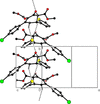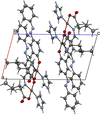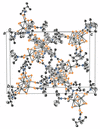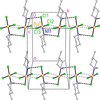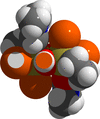issue contents
May 2024 issue

Cover illustration: In an attempt to synthesize a complex of ethyltin(IV)—tribromide with DMF, a hydrolysis product of humid air, di-μ-hydroxido-bis[dibromido(dimethylformamide-κO)ethyltin(IV)], was accidentally obtained. This report describes the structure of this hydrolysis product [Sn2Br4(C2H5)2(OH)2(C3H7NO)2] in which two octahedrally coordinated Sn atoms are linked together via two bridging hydroxide groups, resulting in a rhomboid-like shape with acute angles at the Sn atoms, obtuse angles at the O atoms, and two different Sn—O bond distances. This is the first structurally characterized monoorganotin(IV)–hydroxide–dihalide. See: Klecker & Reuter [Acta Cryst. E80, 522–526].
research communications









































 journal menu
journal menu












